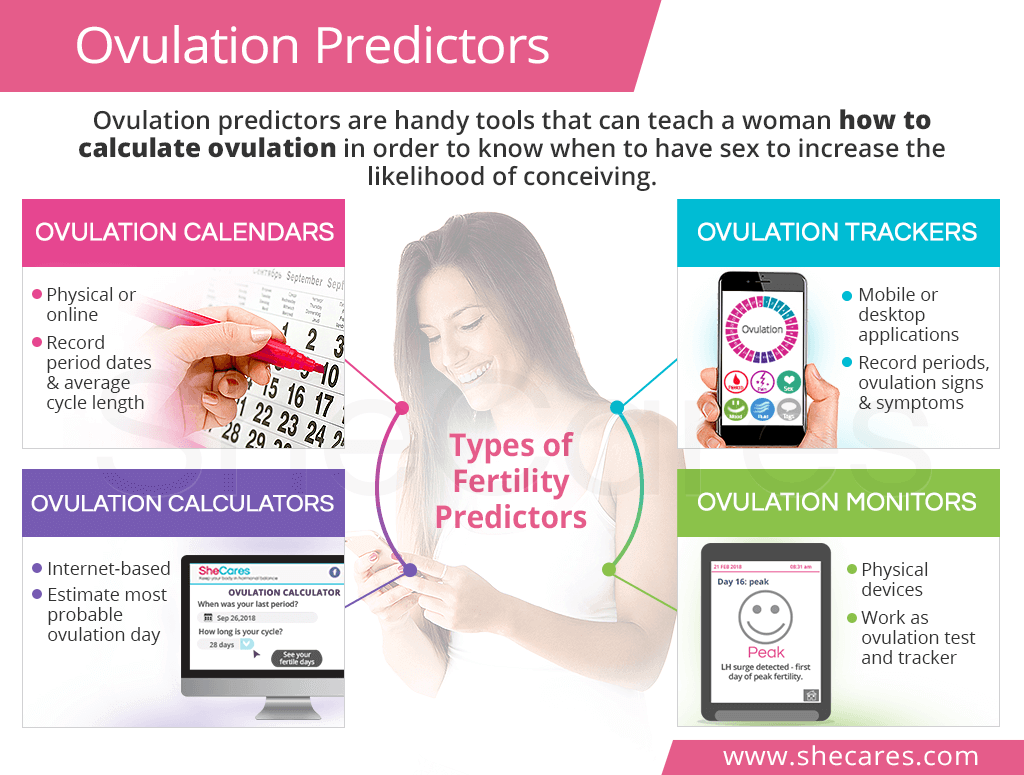Ovulation Calendars
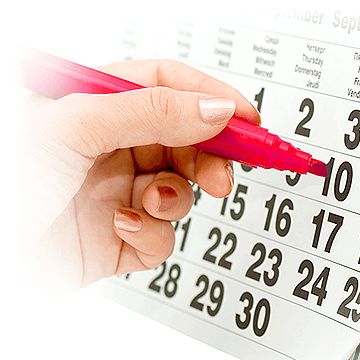
An ovulation calendar is a good place to start familiarizing oneself with menstrual patterns in order to estimate ovulation.
It simply consists of keeping a record of period dates for at least three menstrual cycles. It can be done on a house calendar, personal agenda, online calendar through an email account, or on virtually any other calendar.
An ovulation calendar should contain the following information:
Dates of recent periods (the first days of the bleeding)
Average length of the cycle (which is counted from the first day of one period until the first day of the next period)
The observations recorded on an ovulation calendar can then be used with other ovulation predictors, like ovulation calculators, to estimate the most probable date of ovulation.
Click here to read more about ovulation calendars or keep on reading for more information on ovulation calculators.
Ovulation Calculators
Once a woman has collected basic information about the patterns of her periods, she can use an online ovulation calculator to approximate her most fertile days.
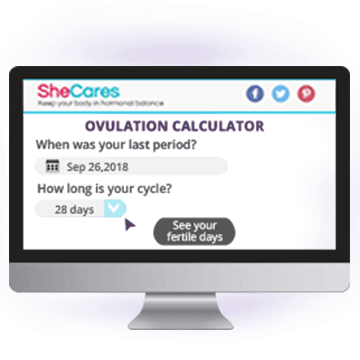
To do so, she has to input the first day of her last period and an average length of her cycles in order to receive an ovulation prediction. Alternatively, she can make calculations by hand.
Whether done by hand or with a fertility calculator, ovulation and one's fertile window can be estimated using the following method:
Ovulation day: Count back 14 days from the first day of the next expected period
Fertile window: Count back 5 more days from the ovulation day (since the sperm can stay in the reproductive tract for up to 5 days)
It is important to remember that because the release of an egg can occur at slightly different times each cycle, a fertility predictor, such as an ovulation calculator, can only produce a rough estimation on when a woman ovulates.
Click here to read more about determining ovulation with ovulation calculators or continue to the next section to learn about ovulation trackers.
Ovulation Trackers
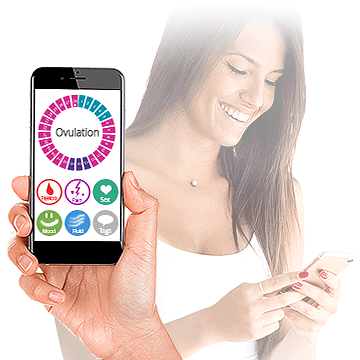
Another good way to go about determining ovulation is by using an ovulation tracker.
These convenient online applications are some of the most popular ovulation predictors. Most can be downloaded to a mobile phone or a desktop at no charge, whereas more advanced options might have a one-time or monthly charge. The most popular ovulation trackers include Glow, Kindara, or Clue.
A fertility tracker allows for registering comprehensive information about a woman's ovulatory patterns:
Period dates
Ovulation signs: fertile cervical mucus, basal body temperature changes, or cervical position shifts
Ovulation symptoms: pelvic pain, breast tenderness, or mood swings
Intercourses
Alternatively, a woman can maintain a pen-and-paper fertility chart and record the information by hand.
After three to four menstrual cycles, a woman should start noticing some characteristics repeatedly occurring around certain time of the month, indicating that ovulation is most likely happening.
Click here to gain a broader understanding of ovulation trackers or keep on reading for more information on ovulation monitors.
Ovulation Monitors
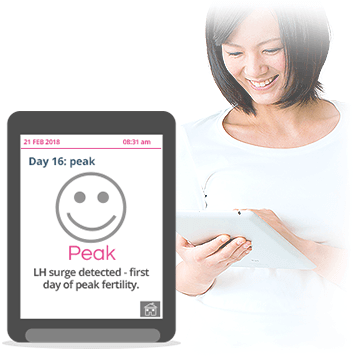
Another ovulation day predictor, namely an ovulation monitor, serves two functions: as an ovulation test and ovulation tracker.
There are three types of ovulation monitors, depending on the test they contain:
Urine Hormone Test Ovulation Test, such as Clearblue Fertility Monitor, which detects LH or estrogen levels preceding ovulation. It comes with testing strips for daily measurements.
BBT Thermometer Ovulation Test, like hiMama, which records temperature throughout the cycle to pinpoint slight changes occurring around ovulation. This type of ovulation monitor can be in the form of a bra-like top, an armpit device, and others.
Electrolyte Levels Detector Ovulation Test, such as OvaCue, which traces the changes in electrolyte concentrations in the saliva or cervical fluid nearing the release of an egg. Two built-in sensors have to be inserted in the mouth and the vagina for daily measurements.
An ovulation monitor not only performs the ovulation test, but also registers the results and analyzes them to produce ovulation predictions. The data is stored for up to six cycles.
Click here to learn how to determine ovulation with ovulation monitors.
Conclusions
Studies have shown that couples who timed having sex with a woman's fertile window conceived faster. Indeed, learning how to calculate ovulation is key to optimizing woman's fertility, and fortunately, there are a number of tools that can make ovulation calculations easy.
From tracking period dates and doing simple ovulation calculations with online tools to creating more comprehensive representations of ovulatory patterns based on signs and symptoms of ovulation, a woman can choose an ovulation predictor that is most compatible with her needs and lifestyle and put herself a step closer to getting pregnant.
Sources
- American Pregnancy Association. (2018). Ovulation Calendar. Retrieved September 19, 2018 from http://americanpregnancy.org/ovulation-calendar/
- American Pregnancy Association. (2018). Ovulation Kits & Fertility Monitors. Retrieved on September 25, 2018 from http://americanpregnancy.org/getting-pregnant/ovulation-kits/
- British Medical Journal. (2000). The timing of the “fertile window” in the menstrual cycle: day specific estimates from a prospective study. Retrieved September 19, 2018 from https://www.ncbi.nlm.nih.gov/pmc/articles/PMC27529/
- March of Dimes. (n.d.). Ovulation calendar. Retrieved September 18, 2018 from https://www.marchofdimes.org/pregnancy/ovulation-calendar.aspx
- Medline Plus. (2018). Pregnancy – Identifying fertile days. Retrieved September 18, 2018 from https://medlineplus.gov/ency/article/007015.htm
- Office on Women's Health. (n.d.). Trying to conceive. Retrieved September 19, 2018 from https://www.womenshealth.gov/pregnancy/you-get-pregnant/trying-conceive
- Planned Parenthood. (n.d.). Fertility Awareness Methods. Retrieved September 19, 2018 from https://www.plannedparenthood.org/learn/birth-control/fertility-awareness
- Your Fertility. (2018). Getting the timing right. Retrieved September 18, 2018 from https://www.yourfertility.org.au/everyone/timing
